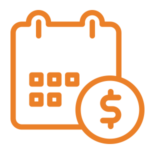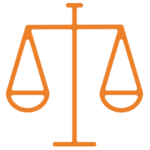Forbearance
Forbearance is an option that a loan holder may make available to borrowers who are having temporary difficulty making regular payments on their student loans. If approved, a forbearance can:
- Allow you to temporarily postpone student loan payments,
- Extend the time period for making payments, or
- Allow you to make reduced loan payments.
Forbearance may not be as helpful as deferment, because interest on loans continues to accrue during forbearance. If you don’t continue to pay the interest, it may be capitalized (added to your principal balance), increasing your total future interest payment.
Interest Accrues During the Forbearance Period
Although accrued interest is calculated on a simple daily basis, interest can accumulate over time and result in a much higher loan balance at the end of a forbearance period. Here’s an example.
| Current loan balance | $20,000 |
| Length of forbearance | 12 months |
| Interest rate | 6.8% |
| Total interest accrued | $1,360 |
| New loan balance | $21,360 |
| Monthly loan payment before 12-month forbearance | $230.16 |
| New monthly loan payment after 12-month forbearance | $245.81 |
While in this example the increase in monthly payment after the forbearance period appears to be minimal (only an additional $15.65 per month), it will add up over the life of the loan.
To find out how much interest you will accrue on your loan during a forbearance period, use Trellis’ Forbearance Cost Calculator below.
A deferment or alternative repayment plan may be a better, less expensive option
You may be eligible for a deferment if you are in school, unemployed, experiencing economic hardship, or in the military, among other reasons.
Generally, a deferment is a better option than a forbearance. While interest accrues on all loans during periods of forbearance, the federal government pays the accruing interest on Direct Subsidized loans and subsidized Stafford loans during periods of deferment. Keep in mind that interest continues to accrue on Direct Unsubsidized loans, unsubsidized Stafford loans, PLUS loans, and those portions of Consolidation loans made up of Direct Unsubsidized loans, unsubsidized Stafford loans, and PLUS loans during periods of deferment.
Also ask your loan holder about available repayment options. If you’re not able to make full payments on your loan, ask your loan holder about an Income-Based Repayment plan, graduated repayment plan, income-sensitive plan, or extended repayment plan. Consult with your loan holder and find the plan that fits your financial situation best.
Forbearance Specifics
Borrowers must apply for forbearance, and approval is not automatic. You can request forbearance over the phone or in writing. If you request forbearance verbally, your loan holder will send you a notice confirming the terms of the forbearance agreement. Review this forbearance notice to make sure the terms are what you agreed to.
Forbearance Tips
Here are some tips about your loan and about forbearance that may help you make the decision regarding whether to pursue this option.
- You may prepay your loan in full or in part at any time, without penalty.
- If you are granted a forbearance, don’t take more time than you need. A longer forbearance means you may have to pay more interest over the life of the loan.
- You’re responsible for interest that accrues during the forbearance period.
- Paying the accruing interest during your forbearance period may keep your loan balance and monthly payment from increasing — and that’s good.
- As soon as you get back on your feet, begin making payments on your loan.
Forbearance Cost Calculator
As you think about whether to request a forbearance, consider the general costs associated with postponing repayment. This cost calculator can help you determine the amount of interest that will accrue during a forbearance period. It also provides an estimate of the increased monthly payment you may have after the forbearance ends, should you allow interest during the forbearance period to accrue and be capitalized.
To make the best use of this calculator, refer to the monthly statement you receive from your loan holders to find the current loan balances. You can also log in to the National Student Loan Data System (NSLDS) with your FSA ID to obtain information about your loans, including loan amounts borrowed.
When weighing the option of forbearance, think about whether your difficulty in making payments may be short-term or is likely to persist over a longer period. If you expect repayment difficulties to persist, we suggest contacting your loan holder to discuss deferment options and alternative repayment plans, as forbearance may not be the best option to manage a longer-term financial hardship.





